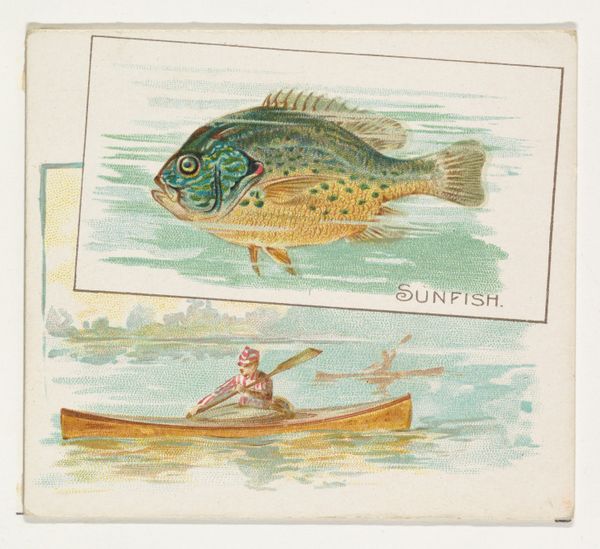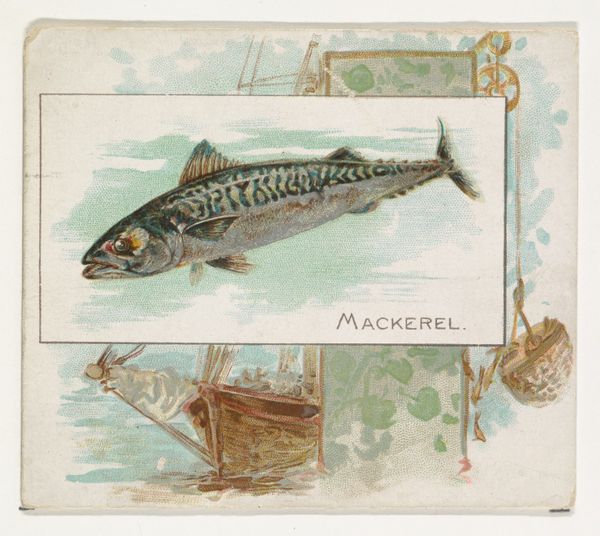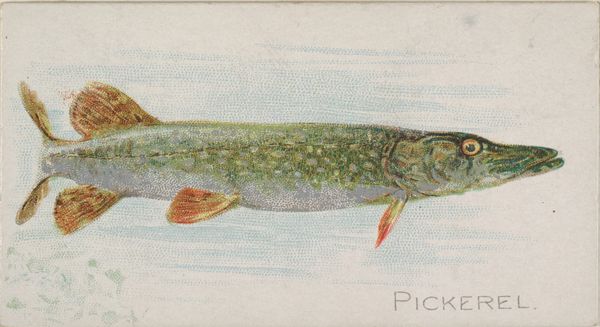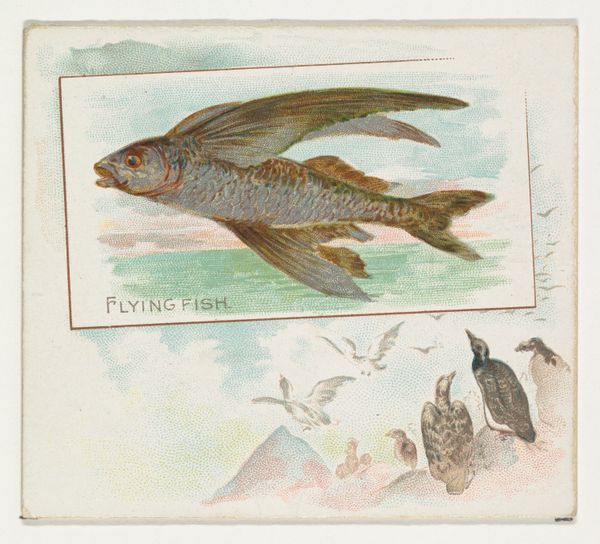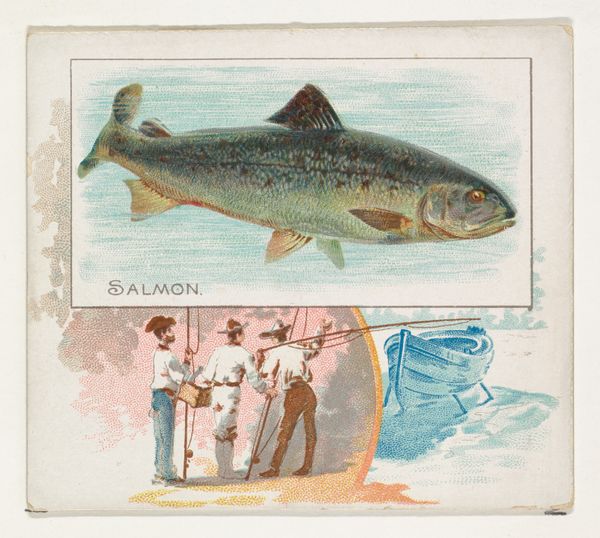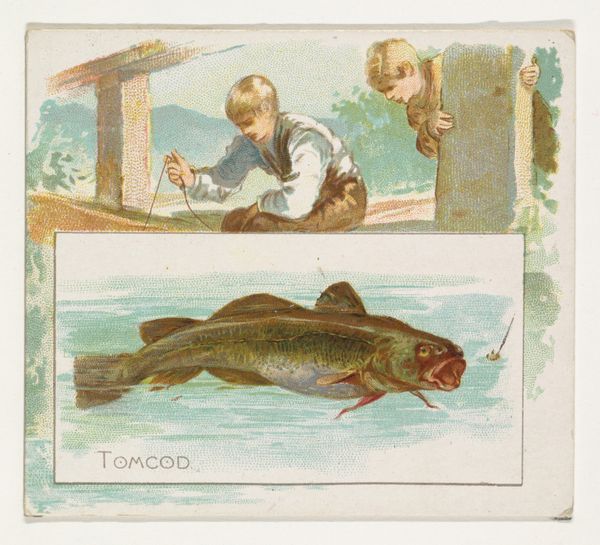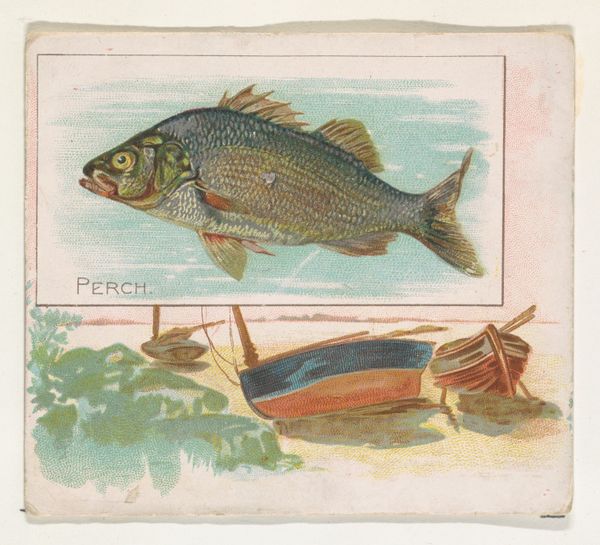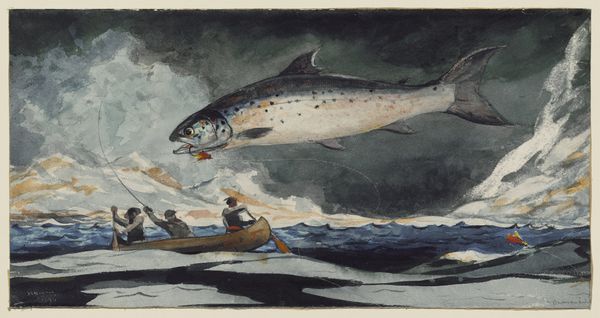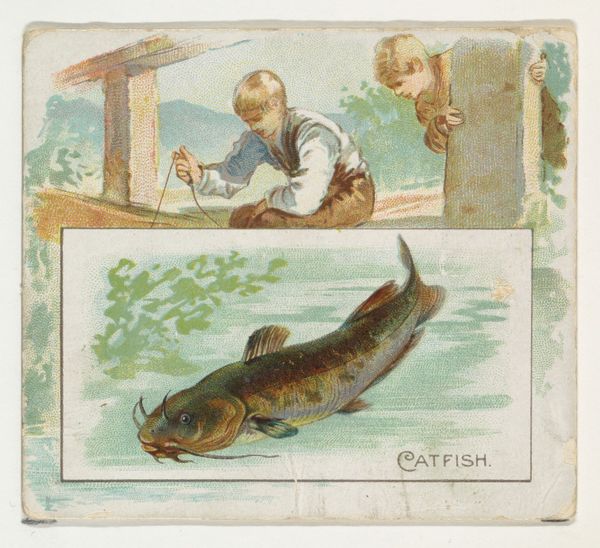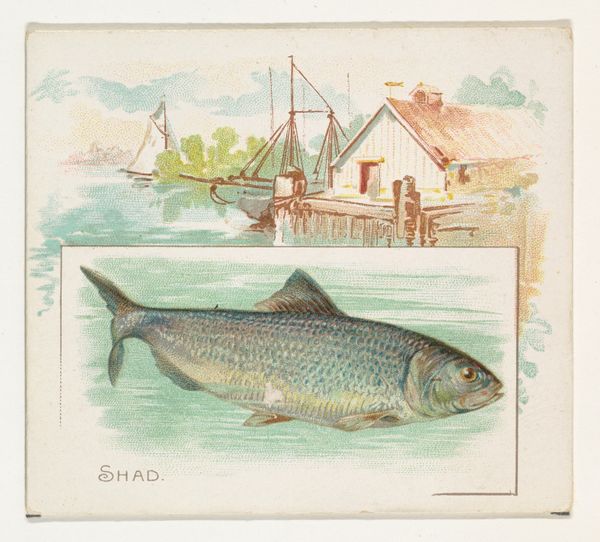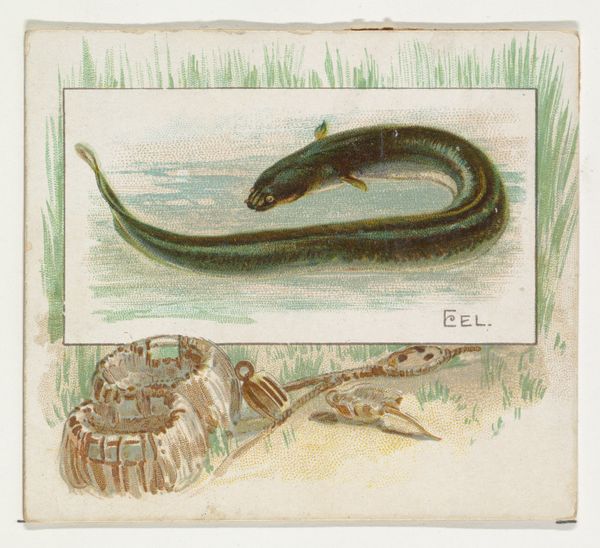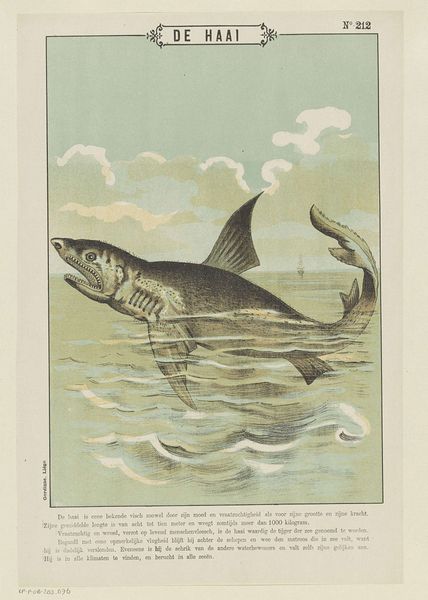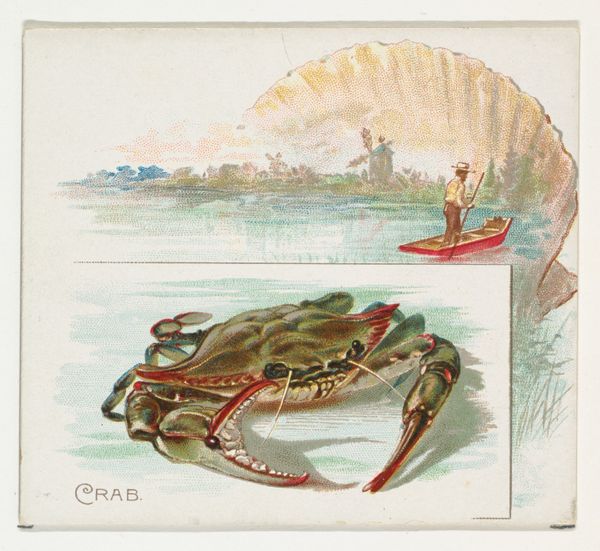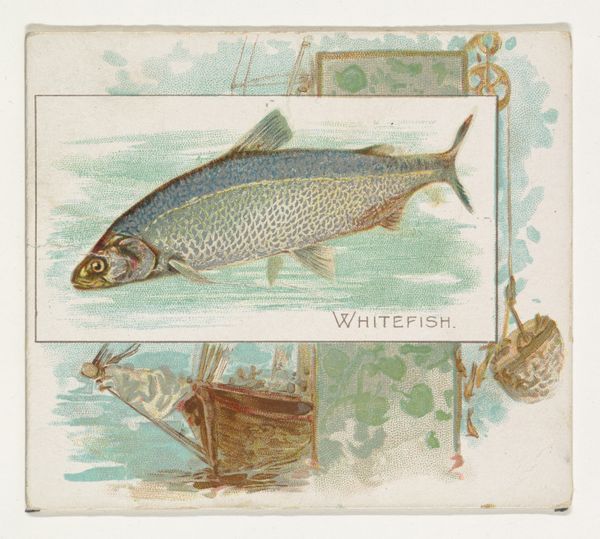
Pickerel, from Fish from American Waters series (N39) for Allen & Ginter Cigarettes 1889
0:00
0:00
drawing, coloured-pencil, print
#
drawing
#
coloured-pencil
# print
#
impressionism
#
coloured pencil
Dimensions: Sheet: 2 7/8 x 3 1/4 in. (7.3 x 8.3 cm)
Copyright: Public Domain
Curator: My first impression? A strangely charming blend of commerce and artistry. Editor: It does have a certain quaintness. What exactly are we looking at here? Curator: This is "Pickerel," one of the fish from the "Fish from American Waters" series (N39) created around 1889 for Allen & Ginter Cigarettes. Editor: Cigarette cards! So, designed to be ephemeral, part of the mass production and consumption cycle. And those delicate colored pencil marks--there’s such a contrast between medium and purpose. The image feels at odds with the pollution related to the industry. Curator: Indeed. Think about how the very act of fishing ties into socio-economic structures, about foodways and livelihoods dependent on these bodies of water and consider what Allen & Ginter, a cigarette company, gains from producing sentimental and aesthetic associations for a decidedly harmful commodity. Editor: Precisely. I am struck by the idyllic image of the lone fisherman in his boat juxtaposed with the stylized, almost scientific illustration of the pickerel itself. Curator: The top panel does have that dreamlike quality of Impressionism. You've got the soft light, hazy windmill, evoking a sense of rural calm… Perhaps designed to appeal to a sense of longing for nature among the urbanizing masses. Editor: There's labor involved at every stage here, from the fishermen to the production line creating the cigarette packs and prints to, of course, the artists crafting this scene. Curator: Absolutely, and how that labor is invisibilized, romanticized, as if disconnected from the economic realities of late 19th-century America. Even the aesthetic choices contribute; the muted colors create this wistful air. Editor: For such a small object, it pulls at so many threads about work, health, consumerism and the natural world. It also begs to be understood in dialogue with histories of leisure and extraction from the natural world. Curator: Yes. The visual language deployed by the company attempts to obscure histories of colonial extractivism while inviting us to imagine consumer practices that don’t harm. It’s both beautiful and deeply problematic. Editor: It really reveals so much when we consider the material and the historical contexts intersecting here. Curator: Exactly! An image meant for a fleeting moment, yet resonating with so much historical weight.
Comments
No comments
Be the first to comment and join the conversation on the ultimate creative platform.
